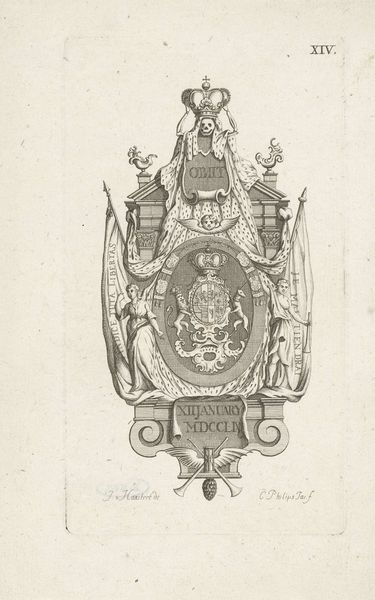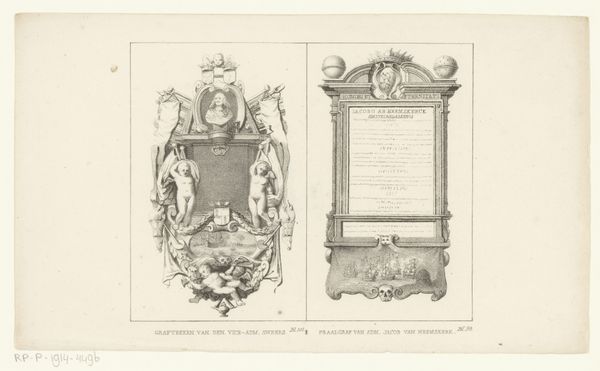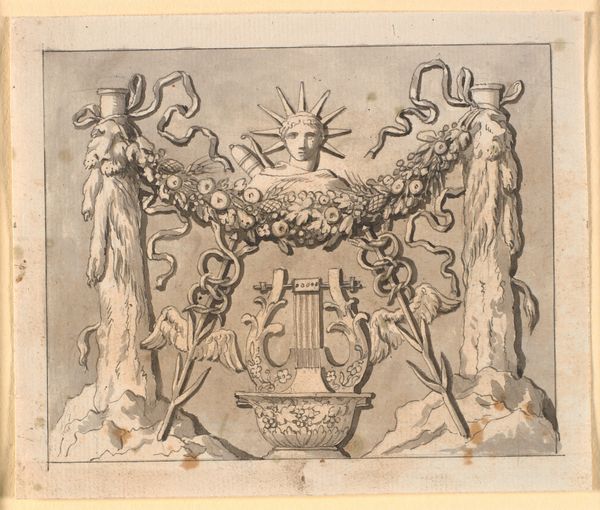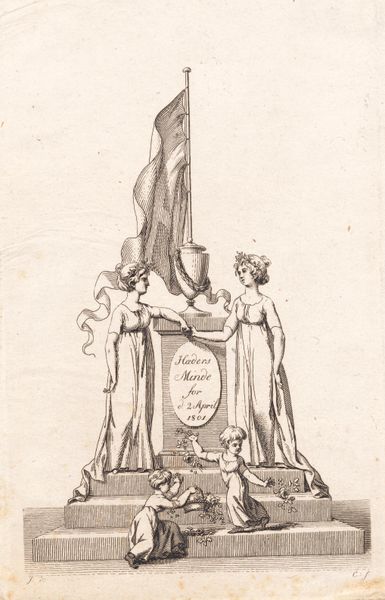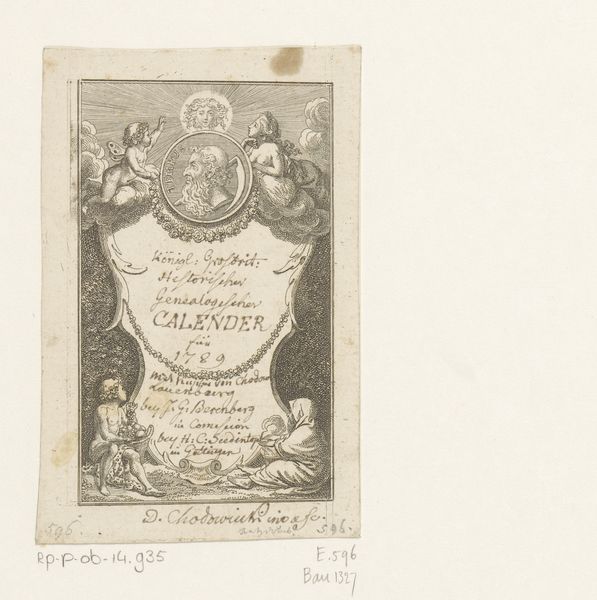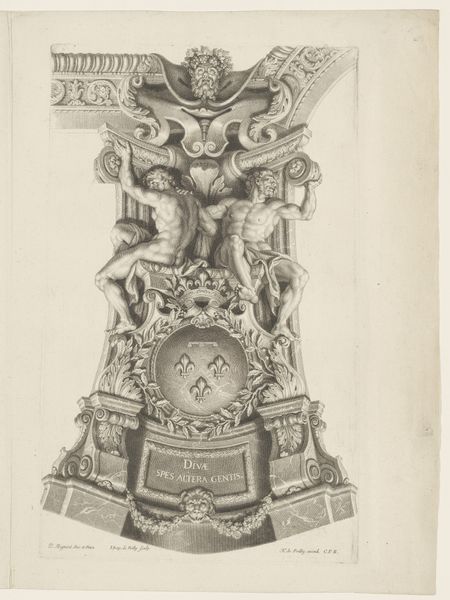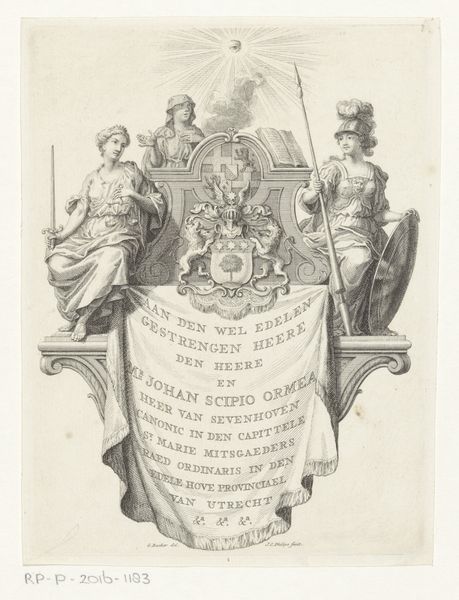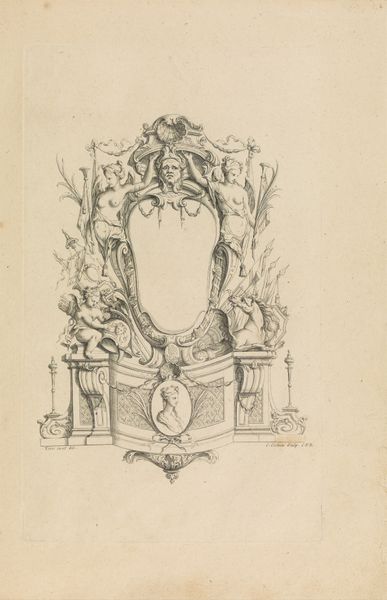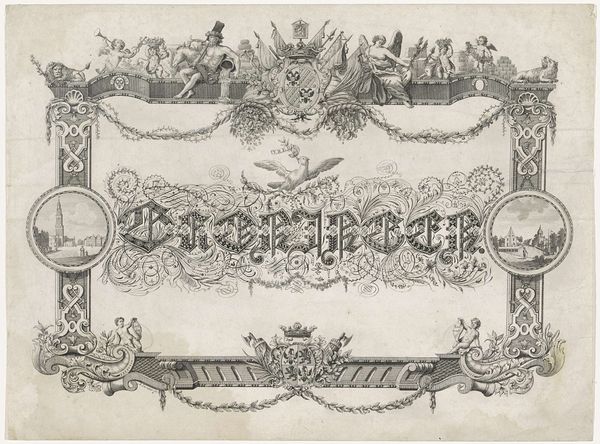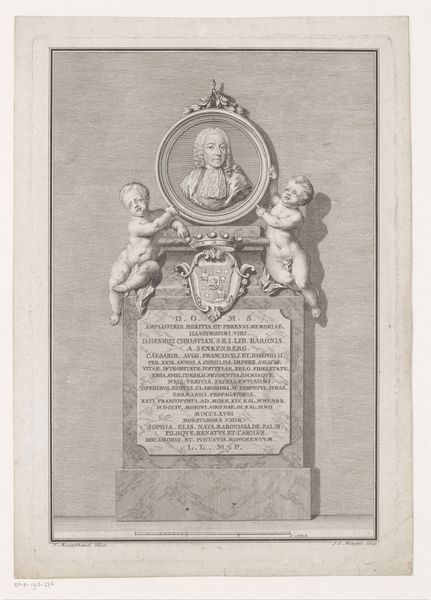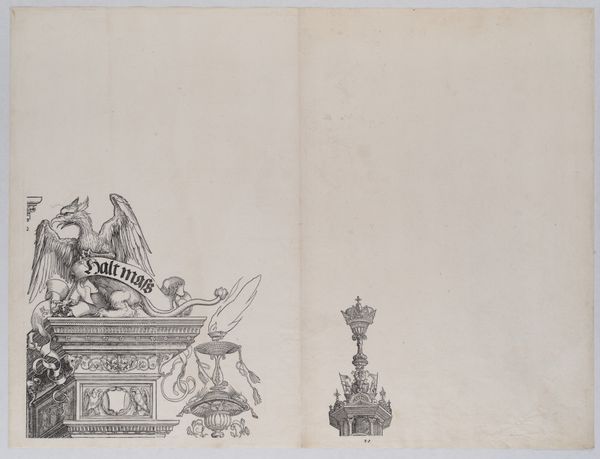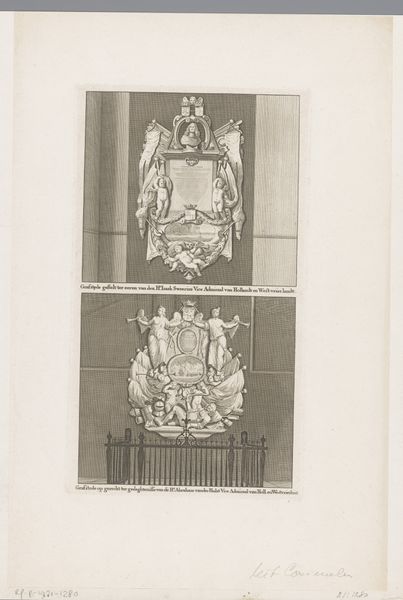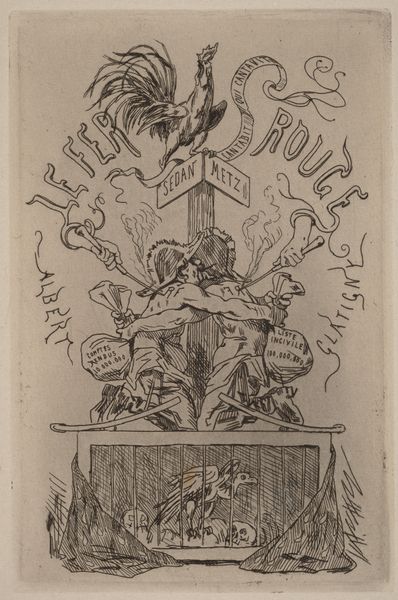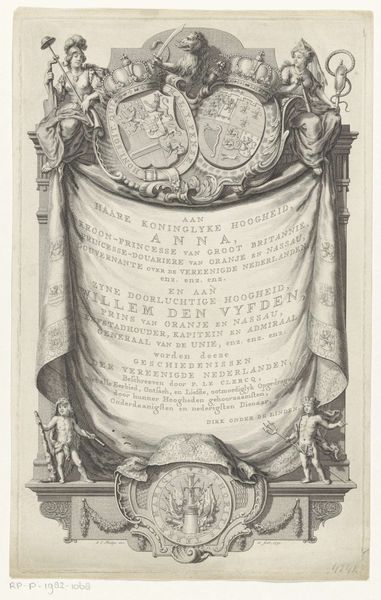
Grafmonument voor admiraal Isaac Sweers in de Oude Kerk te Amsterdam c. 1850 - 1900
0:00
0:00
anonymous
Rijksmuseum
Dimensions: height 139 mm, width 83 mm
Copyright: Rijks Museum: Open Domain
Curator: I would describe this drawing as a confluence of labor, material and the symbolic order it serves. Editor: Here we have what's been called "Grafmonument voor admiraal Isaac Sweers in de Oude Kerk te Amsterdam", likely created between 1850 and 1900. It’s anonymous, using ink on paper. It has an academic and neoclassical style, and an allegorical theme with geometric shapes. The work's intricate linework immediately brings to mind detailed craftsmanship; what can you tell me about it? Curator: Looking closely, the medium itself—ink on paper—is revealing. This wasn’t about expensive oils or grand scale. The choice signals a different intention, perhaps focused on wider distribution via prints and thus accessibility, rather than unique display for elite patrons alone. Who would buy such work, what social class, and why? Editor: Interesting, so it's not necessarily about inherent preciousness of materials, but about production? And who gets to have it and consume it. I see. Curator: Exactly. Observe the Neoclassical elements, normally connected to luxury marble sculpture celebrating aristocracy. In this ink drawing, what new meaning emerges from adapting luxury symbolism for common production and circulation? It speaks to a changing relationship with status, accessible via mass produced objects in ordinary materials. What do you make of this from a modern vantage? Editor: I guess, seeing that something considered a craft becomes something to show appreciation, admiration for art? And it makes me consider what our standards for art are, like who decided marble is fancy. Curator: Indeed! It exposes how so-called “high art” relies upon materials, production and labor. Understanding those things allows us to dismantle conventional categories and appreciate more fully art history in its social reality. Editor: This gives a lot to consider regarding how we assign value to materials, process, and access to art! Thank you.
Comments
No comments
Be the first to comment and join the conversation on the ultimate creative platform.
